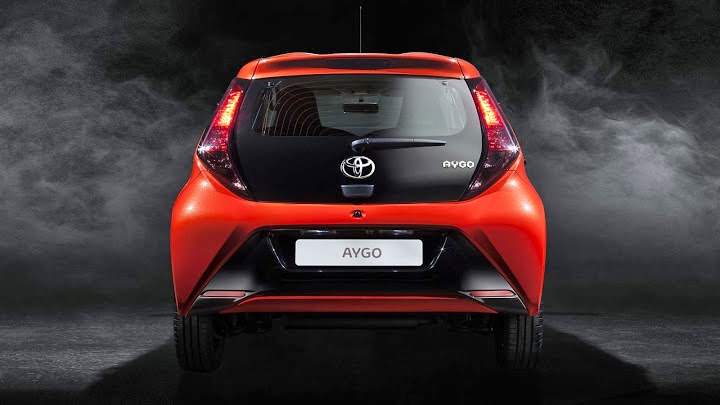
Aygo has stood out in the crowd since its arrival, which happened in 2005, for being a very different example of badge-engineered car. Co-developed with PSA, Toyota’s European hatchback had much more in common with its French counterparts inside than out, while pretty much any other similar case was conceived in the opposite way. Working like that freed the Japanese to start building its own public, using arguments like associating Toyota’s excellent reputation with a car body whose acceptance in that continent is great. Over these years, the supermini not only managed to have nice sales as it also worked as a “first step” of its automaker’s lineup: two out of three customers changed their Aygos for another Toyota. And all this without interfering on its brothers’ sales.
This is why the two companies didn’t think twice about investing on a sequel. After being facelifted in 2009 and again in 2012, the trio now receive a whole new phase. Peugeot and Citroën already showed 108 and the new C1, so now it’s time to see what Toyota did. Since such small differences were already enough to make the outgoing Aygo a success, the Japanese automaker decided to tone things up. As these pictures show, it went further than ever with the task of giving the car a strong image of its own. The intention was to enhance its original proposal of an efficient, city-friendly car filled with a set of exclusive characteristics that make it very easy to recognize. Or, if you want to make it fancy and paraphrase Toyota, the “evolution of Aygoness”.








Yes, the car’s biggest feature lies on its front fascia. Since this automaker doesn’t care much for tendencies like unified design languages, Aygo was free to boast a style of its own. Those large stripes are big enough to start at the rearview mirrors, as if they were extensions of the side windows, invade the front by merging each one with a headlight, create a big intersection which is totally filled by the company logo, and end at the lower portion, with the radiator grille between them and the daytime LEDs on the other side. The sides rely on a tall beltline, which aids for a movement feeling. Besides, it’s interesting to notice that the solution of hiding the C-pillar underneath rear window and tail light was used only on 107 and the old C1 before, and now appears only on Aygo.
This car turns even more surprising when you notice that each color highlights different design elements. When it uses dark colors, having the accents in gray leaves it a little more elegant, rather than sporty. But when you ask it in tones like the white and the orange of the pictures, Aygo’s style toys with the contrast between its elements and seems to have a different silhouette. For instance, the rear bumper’s shape intends to make the vehicle look longer. Paired to the “disguised” C-pillars and to a discreet rear spoiler, when you look from the sides, the rear seems to form a concave line (like what the old Peugeot 308 simulates), when it’s actually as convex as 108 and C1’s. But if you think Toyota’s effort went only to Aygo’s design, you’re wrong.


Sure, the styling will definitely be Aygo’s biggest sales argument, but the full intention would be something such as “come for the outside, stay for the inside”. The roof received a double-bubble shape in order to increase the internal space without recurring to significant dimension increases (the car is only 25-mm longer). The idea was to reduce the cabin’s components and create a simpler room. The dashboard once again looks very much like its siblings’, but this is also a good thing once again. There seems to be a two-tone coating with the central console coming in piano black and holding a big touchscreen for the infotainment central. There will be more options of customization, but there are also nice standard features like the instrument cluster placed 50-mm deeper and the digital temperature gauge changing its graphics according to the current settings.
Toyota also claims that Aygo will have a different sales structure. All customization options will be restricted to the X-play trim and there will be a new inventory strategy at the Czech plant, supposedly better than what is used by rivals such as Fiat 500, Mini Cooper and Opel Adam. When it comes to powertrain, Aygo won’t offer PSA’s 1.2L four-cylinder unit: the Toyota will stick to the 68-hp 1.0L engines once again, both three-cylindric and paired whether to five-speed manual or six-speed automatic transmissions. Efficiency figures should be very similar to its French siblings’, while prices should be a little higher here. This car is expected to hit the streets in a few months, with both three and five doors but no open-top variation, at least for now.